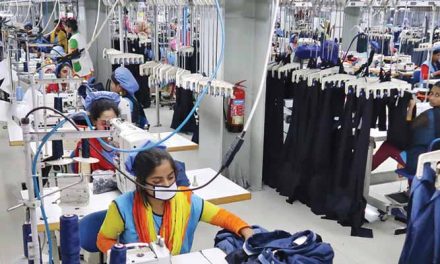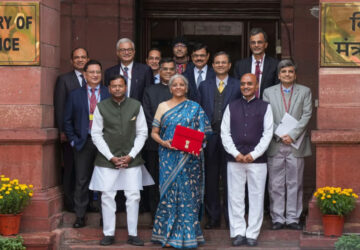Supply chain management is no more about the technology you have, it’s about the economy you function in. Recently, we have seen a shift in the global economic mass to the emerging economies. It has largely been driven by the weak performance of the developed economies. This shift is making supply chain configurations increasingly volatile. Simultaneously, new business models are pushing towards customer-driven supply chains, leading to the trend of using small distribution centers located close to the customers.
The garment industry is facing the same fate as emerging economies are getting a lot of attention from the big brands in the business, due to their cost advantages and strategic locations. Logistics and freight transportation are the backbones of international trade, and their performance is affected by factors like the country’s legislation, carrier and shipper performance and technology, and their international agreements (FTAs, etc.). There are many factors that have the potential to impact the profitability and the strategic viability of apparel supply chains:
Emerging ASIAN economies and their impact
The global center of economic activity is shifting towards Asian countries, owing to their shooting GDP growths. Population and growth in disposable incomes are also affecting their production capabilities and consumption patterns, thereby affecting apparel supply chains in general. This calls for the need of improvements in their freight infrastructures and system compliances.
Logistics performance
If we look at the complete apparel supply chain, we can find barriers to trade at multiple stages. Transportation and logistics infrastructures have a direct impact on the delays, thus making them a prominent cost factor. Also, other cost factors like unpredictable border crossings, market access
restrictions, system corruption, and custom and compliance complexities affect supply chain effectiveness. These restrictions become further problematic in the garment industry, as fast fashion has and is still shrinking lead times. Hence, improvement in the logistics performance of an
apparel exporter/manufacturer can considerably boost business bottom-line. An OECD study has actually concluded that a 10 per cent growth in logistics performance, results in 70 per cent increase in bilateral imports.
Process standardization
To harmonize the technical and market conditions with the world, soft measures in addition to hard infrastructure is also the need of the hour in the emerging economies. For instance, simple standardization of processes across the supply chain can actually reduce overall supply chain costs as
effectively as infrastructure development might. For example, the development of the Single Window Customs system, in Indonesia has facilitated in smoother movement of goods across their borders. Combining all their customs information, while increasing their system’s transparency and accountability, has benefitted their trade significantly.
Big Data
Big data and internet have given us enough information right about anything we put our minds to. But, only around 20 per cent of the supply chain actors today have the necessary information needed to run their businesses effectively and efficiently. This is a direct hint that we are failing to use big data completely to our advantage. Big data has the potential to improve supply chain efficiency, by enabling businesses to identify the weak links where intervention is needed. The power of information is not even limited to that. Information is the tool that can help supply chain actors to counter system corruption, by enabling data access and transparency across the supply chain.
Due to shrinking lead time of garment manufacturing its corresponding supply chain is in dire need of solutions which uses BIG data and produces actionable intelligence such as predicting demands, determining consumptions and costs. intelloBuy, which is a fabric estimation solution helps garment manufacturers in the historic evaluation of their orders to achieve the most accurate buying consumption.
Sustainable development
The millennial user is the future of apparel industry. They are not the biggest buyers of apparel products; they also have the power to influence global buying patterns due to their powers of social media identities and connectivity. This target group of millennial customers is extremely conscious about the consequences of their actions and social variables drive their buying decisions. Hence, apparel brands need to re-think their supply chain’s collective impact on environment and society to keep millennial consumers engaged with the brand. Carbon savings in logistics is one area where a lot of work can be done. Proper carbon saving reporting and better monitoring will not only affect the brand image but will also contribute to the company’s bottom line.
Till now, logistics industry was a neglected area when skill and process improvement efforts were made. But with the importance, the “last mile” delivery is getting, we need much more skilled labor than ever before in logistics. Moreover, trade unions, companies, and government all need to work together to manage the needs of supply chains of the future. Collaboration and cooptation are keywords that are going to drive apparel supply chains of the future.

















